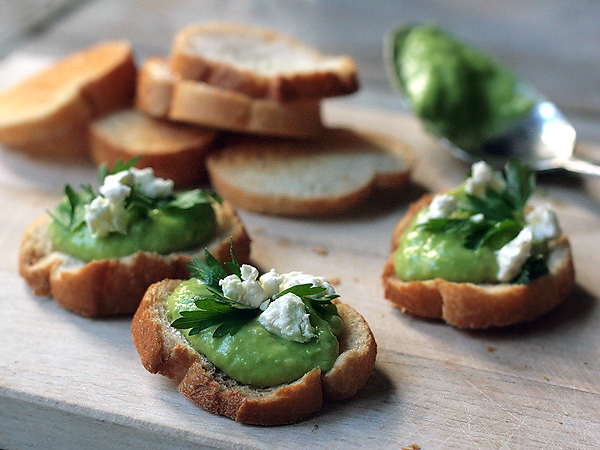
The green pods contain smooth, pale green beans that are firm yet creamy and have a nutty, buttery flavor. When buying favas, choose pods with an even, grassy green color and few or no brown spots. The pods should look and feel plump. Avoid those that have beans bursting out of them--this means they're old. Leave the beans in the pods until just before cooking. They can be stored in a plastic bag in the crisper drawer for up to a week. Shelled, blanched and peeled favas can be frozen for up to a year.

Once you've gone through the trouble of shelling, you don't want to cover up their flavor, so stick with simple preparations. Add them to a salad, saute in butter for a side dish, or toss with pasta. Mashed or pureed they make a suitable spread for crostini. They can also be grilled shell and all, after which the tough skin will slide off. Drizzle with olive oil and sprinkle with salt for a peel-and-eat snack just like edamame. Sweet grassy fava beans pair well with bright flavors like lemon, mint, basil and sheep's and goat's milk cheese. They also partner well with salty cured meats and wild spring mushrooms like morels.
They do require shelling and peeling to get to the good part, but they're well worth the effort!
No comments:
Post a Comment